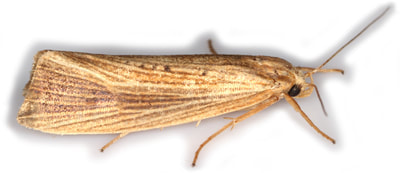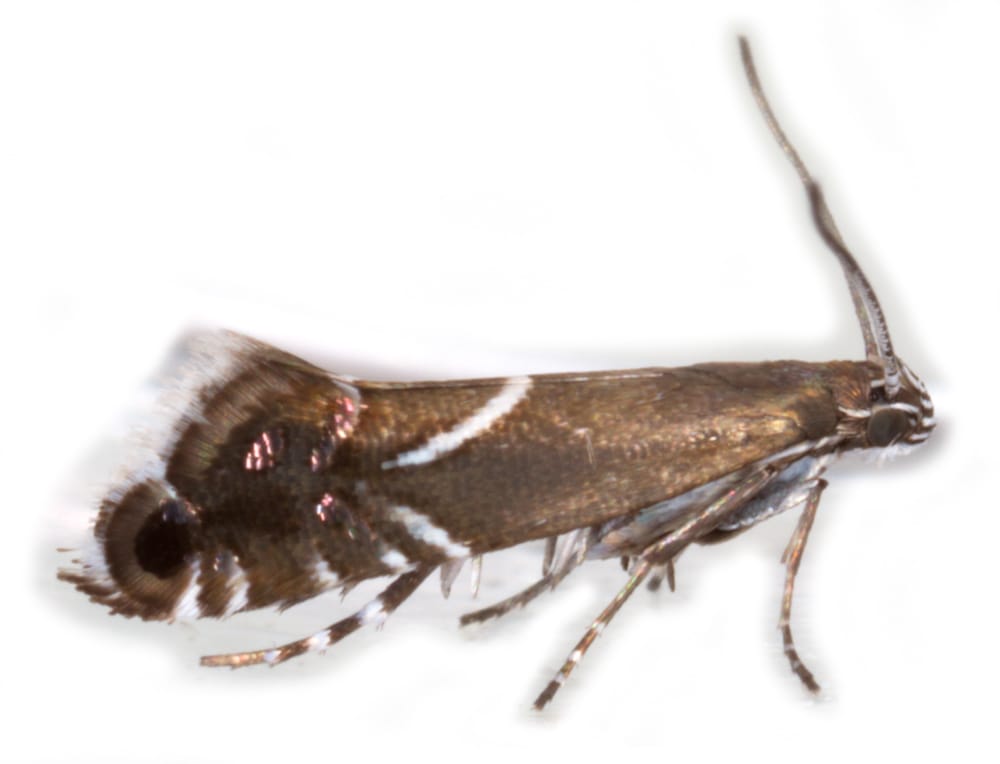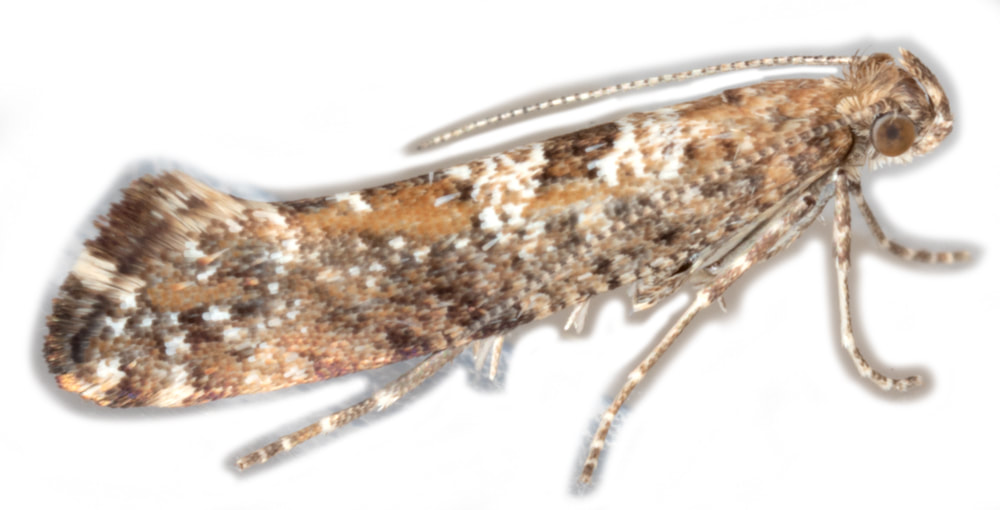Subfamily: Orthoteliinae (1G 1S)
The rationale for including this as a subfamily of Glyphipterigidae is not clear to me.
Orthotelia
Proboscis rudimentary; Maxillary palps 4-segmented
Forewing almost rectangular; V8 to apex; all veins present and separate; chorda present (what is this?)
Hindtibia smooth-scaled; tarsi spined ventrally
Male genitalia "highly specialised so that parts are difficult to identify"; Ref: MBGBI3
Orthotelia
Proboscis rudimentary; Maxillary palps 4-segmented
Forewing almost rectangular; V8 to apex; all veins present and separate; chorda present (what is this?)
Hindtibia smooth-scaled; tarsi spined ventrally
Male genitalia "highly specialised so that parts are difficult to identify"; Ref: MBGBI3
Subfamily: Glyphipteriginae (1G 7S)
Glyphipterix (7S)
Habit of raising and lowering wings when at rest ("fanning"); Head smooth-scaled; Antennae 3/5 length of forewing;
Labial palps slender, slightly upcurved; Maxillary palps vestigial; Proboscis well-developed
Forewings moderately elongate, with distinct tornus; Hindwings moderately broad, but narrower than forewings; Legs smooth-scaled
Habit of raising and lowering wings when at rest ("fanning"); Head smooth-scaled; Antennae 3/5 length of forewing;
Labial palps slender, slightly upcurved; Maxillary palps vestigial; Proboscis well-developed
Forewings moderately elongate, with distinct tornus; Hindwings moderately broad, but narrower than forewings; Legs smooth-scaled
Subfamily: Acrolepiinae (3G 6S)
MBGBI3 treats Acrolepiinae as a subfamily of Family: Yponomeutidae
Genera: Digitivalva (2S), Acrolepiopsis (3S), Acrolepia (Distinguished by male genital morphology)
Head with tuft of scales on vertex; Maxillary palps 3-segmented; Labial palp long, curved; S2 not tufted; S3 =/> S2; Ocelli present*
Forewing V7 to termen, V10&9 separate at base; Hindtibia smooth-scaled (not hairy); Lateral pleura of abdominal S8 expanded posteriorly
Without sclerotized abdominal plates on S8 or S9; Abdominal tergites not spined; Hindwing with 8 veins; V4&3 stalked
Male genitalia: Uncus absent, saccus highly developed, aedeagus without sheath at base and without cornuti
Female genitalia: Ostium bursae sclerotised
*MBGBI3 keys Acrolepiinae within Yponomeutidae as having ocelli present, but in its introduction to Acrolepiinae the text incorrectly states “ocelli absent”
Genera: Digitivalva (2S), Acrolepiopsis (3S), Acrolepia (Distinguished by male genital morphology)
Head with tuft of scales on vertex; Maxillary palps 3-segmented; Labial palp long, curved; S2 not tufted; S3 =/> S2; Ocelli present*
Forewing V7 to termen, V10&9 separate at base; Hindtibia smooth-scaled (not hairy); Lateral pleura of abdominal S8 expanded posteriorly
Without sclerotized abdominal plates on S8 or S9; Abdominal tergites not spined; Hindwing with 8 veins; V4&3 stalked
Male genitalia: Uncus absent, saccus highly developed, aedeagus without sheath at base and without cornuti
Female genitalia: Ostium bursae sclerotised
*MBGBI3 keys Acrolepiinae within Yponomeutidae as having ocelli present, but in its introduction to Acrolepiinae the text incorrectly states “ocelli absent”
Digitivalva (2S): valva with one or more dorsal lobes
Acrolepiopsis (3S): valva long, lanceolate, with slender setae at apex
|
011 Acrolepiopsis assectella
(Leek Moth) |
012 Acrolepiopsis betulella
(Ramsons Moth) ws: 12-14mm; Aug-May; ramsons (Allium ursinum); RDB in scattered localities in Scotland and Co.Durham |
013 Acrolepiopsis marcidella
(Ruscus Moth) ws: 13-15mm; Jun-Jul; butcher's-broom (Ruscus aculeatus); RDB deciduous woodland Dorset and Hampshire |
Acrolepia: valva simple with tuft of thick setae at apex









